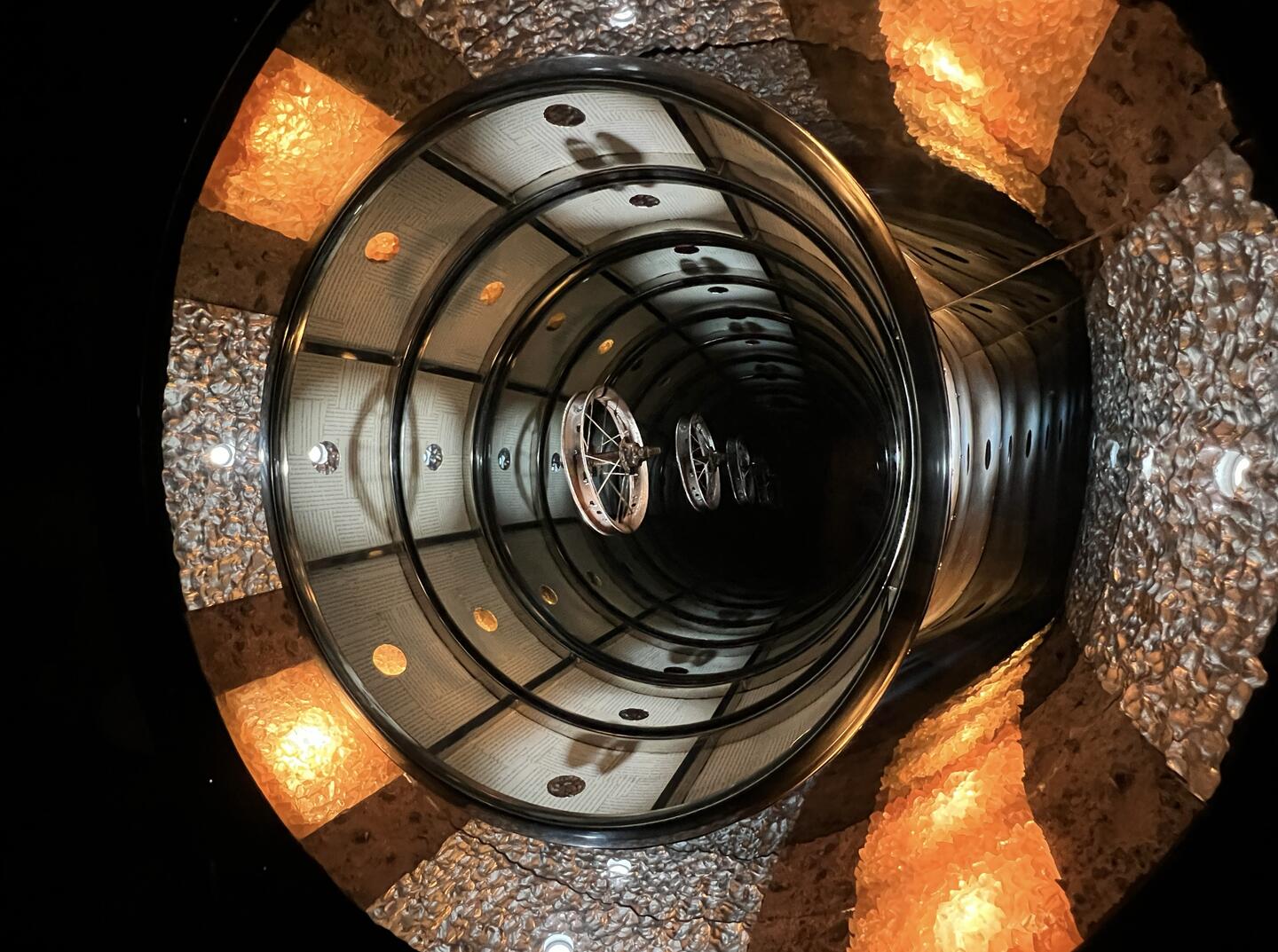Experts have noted that Kiaf-Frieze Seoul has gotten younger this year—once dominated by a handful of affluent collectors, the art scene is gradually opening up to younger generations, especially those in their 20s to 40s.
 Kiaf SEOUL 2023. Photo by Kiaf SEOUL Operating committee. Courtesy of Kiaf SEOUL.
Kiaf SEOUL 2023. Photo by Kiaf SEOUL Operating committee. Courtesy of Kiaf SEOUL.The fervor of last year’s Frieze was notably absent this year in Seoul, leading to an anticipated slowdown in sales at Frieze Seoul. According to Artnet News, most galleries at Frieze Seoul reported sales in the five-digit range, with only a few achieving sales over $100,000. Some collectors who visited Seoul even remarked that they returned empty-handed. In the case of Kiaf SEOUL, Kukje Gallery notably set a record for the highest-priced sale at the VIP opening, with a work by Ugo Rondinone reportedly selling for $50,000 to $90,000.
Yet, it would be hasty to conclude that Kiaf and Frieze have been lackluster this year; experts have noted that the art market has gotten younger this year—once dominated by a handful of affluent collectors, the art scene is gradually opening up to younger generations, especially those in their 20s to 40s.
This rejuvenation of the art market was evident in the various events taking place around Seoul during the joint art fair. Since the opening of Frieze Seoul on September 6, areas such as Cheongdam-dong, Hannam-dong, and Samcheong-dong have extended their exhibition hours until midnight, running open bars. It is estimated that over 50 related events were held in Seoul during the overlapping dates of Kiaf and Frieze. While some galleries required VIP invitations for entry, many galleries took a more inclusive approach and lowered their entry barriers to welcome younger visitors.
 Frieze Seoul 2023. Photo by Aproject Company.
Frieze Seoul 2023. Photo by Aproject Company.The influx of visitors was not limited to Korean art enthusiasts. A notable feature this year was the increase in Chinese visitors compared to the previous year. Collectors from China who could not attend Kiaf and Frieze due to travel restrictions in the previous year marked their presence this time, and a significant number of them were reported to be in their 20s and 30s.
As the art market has become younger, the nature and price range of traded artworks have also changed. While in the past, a few collectors traded artworks worth tens of billions of Korean won, this year saw a surge in artworks priced between hundreds of millions and tens of millions of Korean won. Additionally, the preferences of young collectors have shifted. Several reports suggested that Kiaf and Frieze Seoul witnessed increased sales of lower-priced works by young artists born after the 1980s.
International galleries that participated in Frieze Seoul displayed a keen understanding of the pulse of the Korean art market. In response to the downturn in both the global art market and the Korean art market, prominent galleries showcased modestly priced works instead of highlighting renowned artists. This shift led some to conclude that this year’s Frieze Seoul was notably commercial, with the fair’s traditionally experimental spirit seeming somewhat subdued.
 Kiaf SEOUL 2023. Photo by Kiaf SEOUL Operating committee. Courtesy of Kiaf SEOUL.
Kiaf SEOUL 2023. Photo by Kiaf SEOUL Operating committee. Courtesy of Kiaf SEOUL.On the other hand, Kiaf noticeably leaned into showcasing more experimental works this year. There was a distinct focus on young artists, with an increase in the proportion of works by emerging and mid-career artists. For instance, Arario Gallery exhibited works by artists such as Gwon Osang, Noh Sangho, Don Sunpil, Ahn Jisan, and Lee Jeongbae, while Atelier Aki presented works by Chung Sooyoung, Yoon Sangyoon, Kwon Neung, Chae Jimin, Kwon Kisoo, and Jeong Seongjoon. The international galleries were no exception to this trend of experimentation. Mexico’s Colector, a first-time participant at Kiaf this year, organized a solo booth for Amor Muñoz, who presented several kinetic multimedia installations. Muñoz’s interactive textile work White Oracle (2023) fetched a price of $15,000 from a private Asian collector.
According to Seoul Shinmun, Simon Fox, CEO of Frieze, stated that the galleries were selective, bringing forth works that would resonate best with their intended audiences. Art critic Jeong Jun-mo mentioned, “There are still very few collectors in Korea who can afford masterpieces. The largest sales are in the range of 1.5 billion to 2 billion won, and few collectors can buy 5 billion to 10 billion won works at once. The major galleries that participated in Frieze Seoul have already understood this situation from last years’ experience, and given the current economic climate in the art market, it is unlikely they would bring expensive works.”
 Kiaf SEOUL 2023. Photo by Kiaf SEOUL Operating committee. Courtesy of Kiaf SEOUL.
Kiaf SEOUL 2023. Photo by Kiaf SEOUL Operating committee. Courtesy of Kiaf SEOUL.While it is essential to understand the adjustments at Frieze, which aimed at more affordable price ranges this year, the sales results varied among the galleries participating in Kiaf. Several galleries expressed concerns that, given Frieze’s inclusion of works at a lower price point, the signature pieces from Kiaf-participating galleries did not gain as much traction.
References
- 서울신문(Seoul Shinmun), 韓작가 잠재력 보여 준 ‘프리즈’… 기획의 힘으로 관객 끈 ‘키아프’, 2023.09.12
- 한국경제(The Korea Economic Daily), ‘그들만의 리그’ 넘어…’영리치’ 문화축제 된 KIAF-프리즈, 2023.09.08
- Artnet News, As Soon As the Glamorous Seoul Art Week Wrapped, Asia’s Art World Began Putting Its Traditional Trade Fairs Under the Microscope, 2023.09.19















